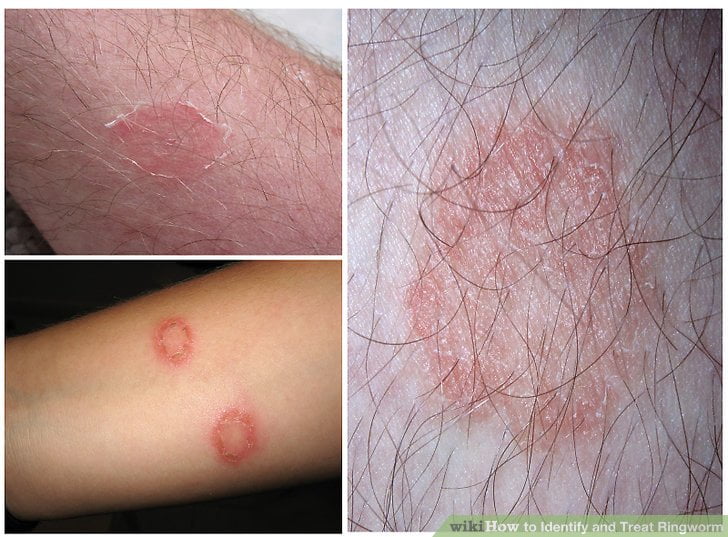This is a viral infection which is causing a painful rash. Shingles can happen anywhere on our bodies but most commonly it appears as a single stripe of blisters which wraps around either the right or left side of your torso. Varicella – zoster virus is the cause for chickenpox and also this virus is the cause for shingles [1]. After you have had chickenpox, this virus is lying inactive in the nerve tissue which is near your spinal cord and brain. As the years are passing by, this virus can reactivate as shingles.
Shingles symptoms
The signs and symptoms of this condition are usually affecting only a small section of one side of your body. These signs and symptoms are including:
- Itching
- You can have a fluid – filled blisters that break open and crust over
- Also you can have a red rash that begins a few days after the pain
- Sensitivity to touch
- Pain, burning, numbness or tingling
Also there are some people who can experience:
- Fatigue
- Sensitivity to light
- Headache
- Fever
Usually, the first symptom of shingles is the pain. For some people, the pain can be intense. Depending on the location of the pain, it can be mistaken for a symptom of problems which are affecting kidneys, lungs or heart. There are some people who experience shingles pain without ever developing the rash. In the most cases, the shingles rash can develop as a stripe of blisters which wraps around either the right or left side of your torso. There are some cases when the shingles rash can happen around one eye or on one side of the face or neck.
 What causes shingles?
What causes shingles?
This condition is caused by the varicella – zoster virus. This is the same virus which is causing chickenpox. Every single person who has chickenpox can develop shingles. After someone has recovered from chickenpox, then the virus can enter your nervous system and it will lie dormant for years. Eventually, this virus can reactivate and travel along the pathways to your skin which is producing shingles. The reason for them is not known. This condition can be caused by a lowered immunity to infections as you are getting older. It is known fact that shingles are more common in people who have weakened immune system and in older adults. Varicella – zoster is a part of a group of viruses which is called herpes viruses, which includes the viruses that cause genital herpes and cold sores. This is a reason why shingles are also known as herpes zoster. But you should know that the virus which is causing shingles and chickenpox is not the same virus which is responsible for genital herpes, a sexually transmitted infection, or cold sores. [1]
Risk factors: Every single person who has chickenpox can develop shingles. There are some studies in which is shown that in the United States of America, most adults have had chickenpox when they were children, before the advent of the routine childhood vaccination which is now protecting against chickenpox. Here are some factors which can increase your risk of shingles:
- Taking certain medications: It is known fact that drugs which are designed to prevent rejection of transplanted organs can increase your risk of shingles, as can prolonged use of steroids such as prednisone. [2]
- Undergoing cancer treatments: It is known fact that the chemotherapy or radiation can lower your resistance to diseases which can trigger shingles. [3]
- Having certain diseases: There are some studies in which are said that if you have hose diseases which are weakening your immune system (such as cancer and HIV/AIDS) can increase your risk of shingles. [3,4]
- Being older than 50: This condition is most common in people who are older than 50. The risk of shingles is increasing with the age. There are some experts who have estimated that half the people which are age 80 and older will have shingles. [1]
Complications: Here are some complications which can happen from shingles:
- Skin infections: If you do not treat this condition properly, then the bacterial skin infections can happen.
- Postherpetic neuralgia: There are some people in whom the shingles pain continues long after the blisters have cleared. This is postherpetic neuralgia. It happens when damaged nerve fibers send confused and exaggerated messages of pain from the skin to the brain. [5]
- Neurological problems: Depending on which nerves are affected, this condition can cause an inflammation of the brain (encephalitis), hearing or balance problems and facial paralysis. [6]
- Vision loss: There are some studies in which are shown that shingles in or around the eye can cause painful eye infections which can result in vision loss. [7]
References:
[1] National Institute of Neurological Disorders and Stroke. Shingles: Hope through research. Retrieved from www.ninds.nih.gov/disorders
[2] Pergam SA, Limaye AP, The AST Infectious Diseases Community of Practice. Varicella zoster virus in solid organ transplantation. American Journal of Transportation. 2013;13(4):138-46.
[3] Lai YL, Su YC, Kao CH, Liang JA. Increased risk of varicella-zoster virus infection in patients with breast cancer after adjuvant radiotherapy: A population-based cohort study. Plos One. 2019.
[4] Brahe C, Ellis R. Got shingles? Test for HIV. Severe shingles as first presenting infection in HIV/AIDS patient. ID Cases. 2020;19:e00725.
[5] Mallick-Searle T, Snodgrass B, Brant JM. Postherpetic neuralgia: epidemiology, pathophysiology, and pain management pharmacology. Journal of Multidisciplinary Healthcare. 2016;9:447–54.
[6] Skripuletz T, Pars K, Schulte A, et al. Varicella zoster virus infections in neurological patients: a clinical study. BMC Infectious Diseases. 2018.
[7] Laderer A. Shingles in the eye is dangerous and can cause blindness — here’s how to prevent it. In Business Insider. 2020. Retrieved from businessinsider.in/science/health/news/shingles-in-the-eye-is-dangerous-and-can-cause-blindness-heres-how-to-prevent-it/articleshow/77535759.cms





